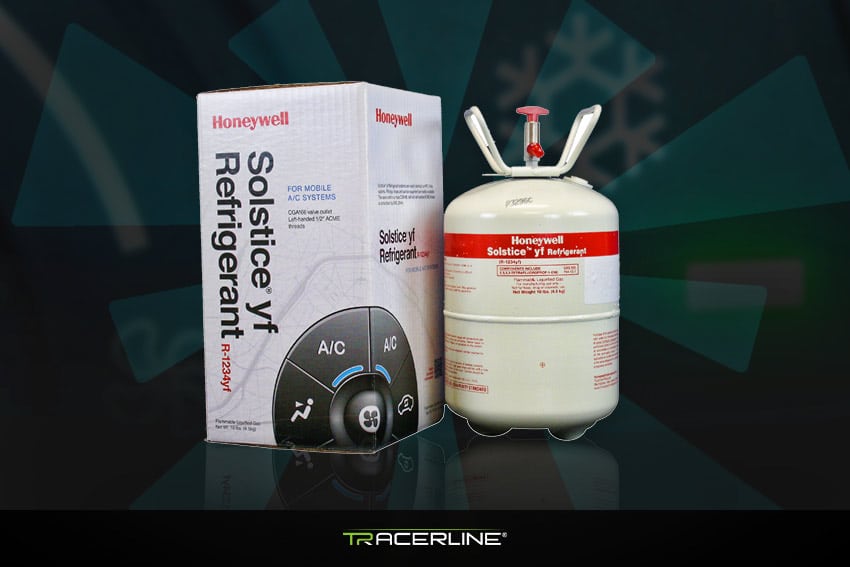R-1234yf is a new refrigerant for automotive A/C systems that is being widely adopted by OEM’s such as BMW, Honda, Ford, and others worldwide.
But what is R-1234yf, and what is the cause of this industry shift?
Low-emission standards set by SAE and the environmental protection agency (EPA) have caused automotive manufacturers to search for low-emission refrigerants. R-1234yf has a lower charge and a 99.7% lower global warming potential (GWP) rating than its predeceasing refrigerant R-134a. This refrigerant is mildly flammable and requires the use of R-1234yf specific automotive A/C tools such as compressor oil, A/C leak detection injection adapters, and A/C recovery machines.
Important things to know about R-1234yf
Charge specifications:
R-134a: 24 Ounces
R-1234a: 21.16 Ounces
Global Warming Potential (GWP):
R-134a: 1430
R-1234yf: 4
R-1234yf is going to be significantly more expensive than R-134a
Technicians should be using R-1234yf PAG oil, as R-1234yf is slightly flammable and the oils contain additional additives to create a moisture resistant environment in mobile A/C systems
Technicians must be trained and certified by an EPA approved program to manage the new refrigerant
You cannot retrofit or “top off” R-134a with R-1234yf
Refrigerants should always be handled in well-ventilated areas and with systems designed to manage R-1234yf (ie. Refrigerant recovery systems).






